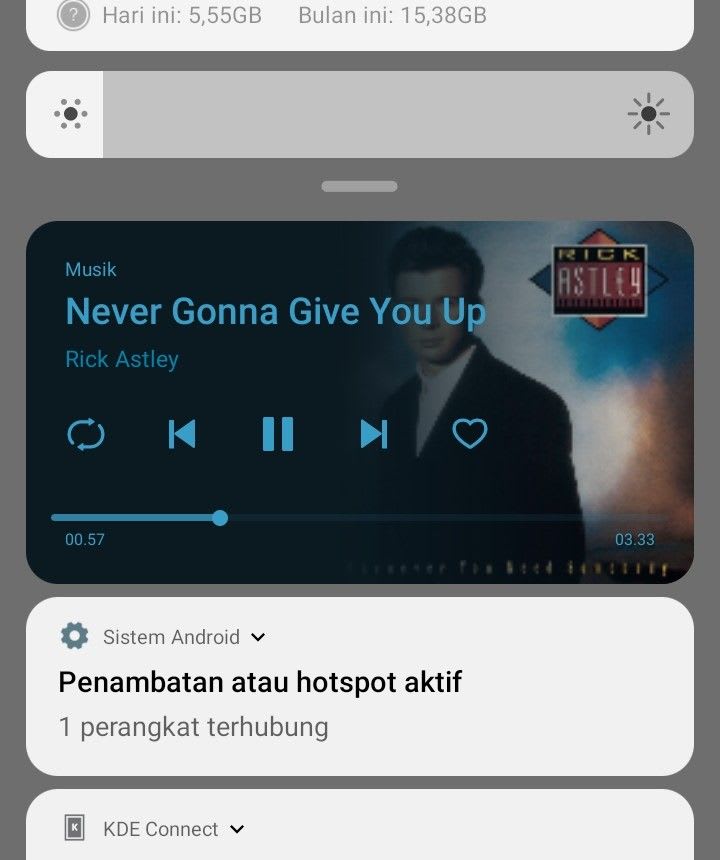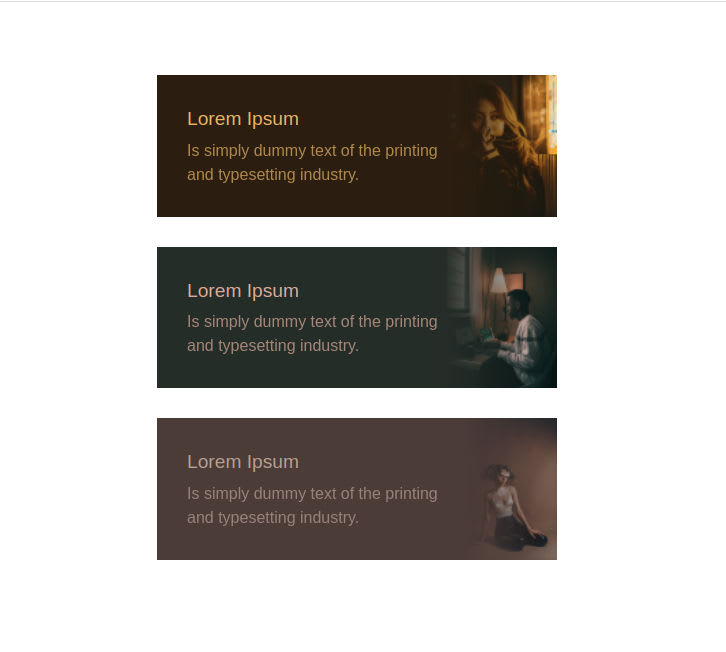

How To Make Adaptive Card Color Depending On Image Background
source link: https://dev.to/mcanam/how-to-make-adaptive-card-color-depending-on-image-background-555b
Go to the source link to view the article. You can view the picture content, updated content and better typesetting reading experience. If the link is broken, please click the button below to view the snapshot at that time.
Hi, this time we will experiment with creating a simple UI component that can change color according to the background image.
I was inspired by the music player notification on my phone:
And the experiment result:
looks cool right? now let's start making it 🚀
Preparation
we need to create html, css, and js files first
index.html
<!DOCTYPE html>
<html lang="en">
<head>
<title>Adaptive Card Color</title>
<meta charset="UTF-8">
<meta http-equiv="X-UA-Compatible" content="IE=Edge">
<meta name="viewport" content="width=device-width, initial-scale=1">
<link rel="stylesheet" href="style.css">
</head>
<body>
<script src="script.js"></script>
</body>
</html>
style.css
*,
*::before,
*::after {
padding: 0; margin: 0;
box-sizing: border-box;
}
html {
font-family: sans-serif;
font-size: 16px;
line-height: 1.5;
}
body {
width: 100vw;
height: 100vh;
display: flex;
flex-direction: column;
align-items: center;
justify-content: center;
}
script.js
console.log("hello world");
Make card component
create html structure of the card like this
<div class="card">
<img class="card-image" src="">
<div class="card-text">
<span>Lorem Ipsum</span>
<span>Is simply dummy text of the printing and typesetting industry.</span>
</div>
</div>
don't forget the style
.card {
position: relative;
overflow: hidden;
width: 90%;
max-width: 400px;
margin-bottom: 30px;
padding: 30px;
}
.card-image {
position: absolute;
top: 0; right: 0;
width: auto;
height: 100%;
object-fit: cover;
object-position: center;
-webkit-mask-image: linear-gradient(90deg, transparent, #000);
mask-image: linear-gradient(90deg, transparent, #000);
}
.card-text {
position: relative;
z-index: 2;
max-width: 75%;
display: flex;
flex-direction: column;
}
.card-text span:first-child {
font-weight: 500;
font-size: 1.2rem;
margin-bottom: 5px;
}
.card-text span:last-child {
opacity: 0.7;
}
For image source you can get it from unsplash or use a local file.
Extract color from image
Yes, we have to extract color from image and it's a quite complex job. Luckily, i found a cool library that will do for us https://github.com/lokesh/color-thief
add the library to our project
<script src="https://unpkg.com/[email protected]/dist/color-thief.umd.js"></script>
Javascript Time
// get all card elements.
const cards = document.querySelectorAll(".card");
// create colorthief instance
const colorThief = new ColorThief();
cards.forEach(async (card) => {
const image = card.children[0];
const text = card.children[1];
// get palette color from image
const palette = await extractColor(image);
const primary = palette[0].join(",");
const secondary = palette[1].join(",");
// change color
card.style.background = `rgb(${primary})`;
text.style.color = `rgb(${secondary})`;
});
// async function wrapper
function extractColor(image) {
return new Promise((resolve) => {
const getPalette = () => {
return colorThief.getPalette(image, 4);
};
// as said in the colorthief documentation,
// we have to wait until the image is fully loaded.
if (image.complete) {
return resolve(getPalette());
}
image.onload = () => {
resolve(getPalette());
};
});
}
If you get an error and you use image from internet, you can add
crossorigin="anonymous"attribute on theimgtag.
Next task, check if the primary color is dark or light so we can correctly choose color for the text. Happy experimenting :D
Thank you very much for reading. Don't hesitate to leave comments, criticisms or suggestions, I will really appreciate it ☺️
Image cover by Hasmik Ghazaryan Olson on Unsplash
Recommend
About Joyk
Aggregate valuable and interesting links.
Joyk means Joy of geeK

